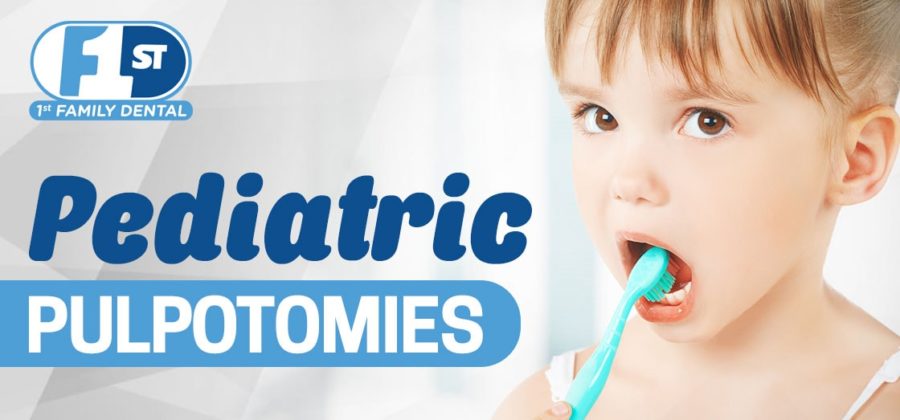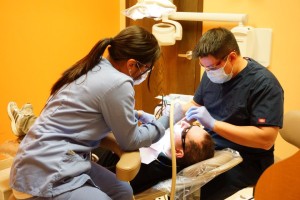Pediatric Pulpotomies
A pulpotomy is the surgical removal of an inflamed pulp chamber in a child’s tooth that has been compromised due to untreated cavities and decay. Bacteria must be removed from the pulp chamber inside the child’s tooth in order to prevent or alleviate an abscess or infection. A pulpotomy is commonly referred to as a “baby tooth root canal.”
A healthy tooth has a space inside it called the “pulp space” which is filled with soft tissues – nerves, blood vessels and pink connective tissue. If a tooth gets a large cavity, the bacteria in the decay can damage the pulp, which is often what causes toothache.
Baby teeth are not as hard and strong as adult teeth, and the nerve inside a baby tooth is closer to the outside, which is why children are often both more sensitive and susceptible to decay and tooth pain.
Pulpotomy Procedure
When the soft tissue in the pulp chamber is inflamed or infected, your child’s dentist may recommend that the entire tooth be removed. However, if the soft tissue in the canals is still healthy enough, a special medicated filling can be put into the chamber in an attempt to keep the remaining pulp inside the tooth alive.
As with other common dental procedures, children can sometimes become anxious. Nitrous Oxide is a common conscious sedation option in pediatric dentistry to help child patients to relax and to make the visit and procedure safer and easier on the child. If your child is having Nitrous Oxide service with their treatment, the doctor will start the flow, ensure your child is comfortable, and will then numb the area to be treated. Next, your child’s dentist will make an opening in the top of the tooth in order to be able to access the pulp chamber. Then your child’s dentist will remove the nerve tissue from the pulp chamber, and place a medicated filling to help seal the tooth and prevent bacteria from entering in the future.
In many cases, your child’s dentist will recommend the placement of a stainless steel or tooth-colored crown over the tooth to ensure it is safe, stable, and protected from food particles and bacteria.
The pulpotomy procedure is very common, very routine and can often be completed in conjunction with other dental treatment such as fillings, in order to minimize the number of times your child will need to return to the office for treatment.
Once the procedure is complete, it is essential to maintain an effective oral hygiene routine for your child, as well as bring them to 1st Family Dental for regular checkup and cleaning visits to monitor the status of the treated tooth, and prevent future decay and reduce the need for additional dental treatment.
Join Us In the Comments!





Leave a Reply
Comment